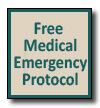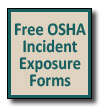Regulatory Compliance Specialist – Linda Cannon; Covid-19 12th Update
MSDS Newsletter Series 38 |
|---|
 Staff of MSDS wish you to Stay Safe, De-Stress and Stay Active! Linda, Anee, Saba, Ifra, Chelsie and Gaetan (no photo)      MSDS views all of our Dental Clients as Healthcare Providers! We Thank all of you for your Outstanding work and all that you do!! 12 Covid-19 Newsletter – Confused on Mandatory Vaccines? Hospitals so far are not make it mandatory. The below questions and answers will help you decide what you want for your office. Remember: This vaccine puts you into the study. It’s experimental and no legal ramifications can occur. https://healthblog.uofmhealth.org/wellness-prevention/not-sure-about-covid-19-vaccine-get-facts-then-decide Not Sure About the COVID-19 Vaccine? Get the Facts, Then Decide Maybe you saw it on social media. Heard it from a friend or relative. Got it in an email. Or have just been wondering silently to yourself. No matter where you heard that claim about the COVID-19 vaccines, it might be making you wary of getting vaccinated when it’s your turn. Or maybe you’re pretty sure the scary claim is false, but you need a plain-English explanation of why. You’ve come to the right place. The Michigan Health Lab collected some of the most widespread rumors, claims, myths and worries about the COVID-19 vaccines, and checked them out with help from Michigan Medicine experts. We also link to websites where you can learn more. FACT: We have COVID-19 vaccines available now because science and health experts responded swiftly to a deadly public health crisis Myths and fears: Many people have voiced concerns about how quickly the vaccines have become available, how short the testing process was, or how political the whole vaccine production effort has gotten because of the national election. There are claims that it was rushed, or that “corners were cut” in the clinical trials or the government’s safety review and approval process. The bottom line: The entire process went faster than usual for explainable reasons, but still followed the usual steps for testing and review. The most important reasons for speed: modern scientific tools are faster than old ones, and there was a worldwide effort to reduce or remove the usual barriers and delays in vaccine research, production and distribution. A large number of ordinary people volunteered for clinical trials of the vaccines, which meant we got the answers to key questions about safety and protection quickly. FACT: The mRNA-based vaccines do not change a person’s DNA Myths and fears: Because the mRNA approach to vaccines is new, you might have seen claims and worries about what might happen after it’s injected into the body. These include the claim that the genetic material in the vaccine will find its way into your DNA permanently. Some have even claimed that a person who gets vaccinated becomes a “chimera” or a “transhuman,” or that because the vaccine’s mRNA was made in cells of a male, a woman receiving it will become partly male. The bottom line: The first two COVID-19 vaccines contain a specific kind of genetic material called mRNA. The mRNA in the vaccines doesn’t need to go into the nucleus of a cell, where DNA is stored, in order to accomplish its mission of teaching the immune system how to recognize coronavirus. FACT: COVID-19 vaccines can cause a short fever, headache, fatigue, sore arm or chills, especially after the second dose. Other reactions are extremely rare. Myths and fears: Some people have seen claims that large numbers of people are getting seriously ill from the vaccine, that the risks of the vaccine aren’t being reported, or that officials know there are long-term risks but are keeping them secret. The bottom line: Tens of thousands of people have received the vaccines in clinical trials, and every day thousands more are getting it, now that the first two vaccines are approved. They are all being asked to track and report any symptoms they experience. FACT: The COVID-19 vaccines do not contain a live or whole coronavirus, microchips, tracer technology, fetal tissue, stem cells, mercury, aluminum, luciferase, the Mark of the Beast, pork products or preservatives Myth and fears: All of these things, and more, have been mentioned in claims that we’ve seen on the internet, or heard about from people who contacted us. People who hear these claims may be worried about health effects, being tracked wherever they go, or even faith-related problems. The bottom line: The first two vaccines to reach the market contain only snippets of genetic material, salt, sugar and fat. The other vaccines being developed will contain weakened or inactive forms of “common cold” viruses, and substances commonly found in many vaccines. FACT: People who are pregnant, breastfeeding or want to become pregnant can get vaccinated against COVID-19. But they should talk to their medical provider. Myths and fears: You might see claims that the COVID-19 vaccine can make someone infertile or impotent, harm a developing fetus in the womb, make the immune system attack the placenta, or hurt a baby who is breastfeeding from a recently vaccinated mother. The bottom line: There’s no evidence for any of these claims, and no scientific reason to think that any of them are true. But there is an urgent need to protect pregnant women from COVID-19, including through vaccination, because we now know they face a high risk of getting seriously ill if they catch the coronavirus. The virus also increases their risk of miscarriage or stillbirth. FACT: The COVID-19 vaccine can end the pandemic much sooner, and with fewer lives lost. This could especially help people in the highest risk groups, including people of color. Myths and fears: Rumors have been circulating that the vaccine is designed to control or eliminate certain groups within our society, to allow for “mind control” of vaccinated people, or to allow certain “elite” members of society to rule the rest of us. The bottom line: All of these are false. The vaccine will be available to everyone in the United States, in an order that’s determined by two things: each person’s risk of being exposed to COVID-19 at work or where they live, and their risk of getting seriously ill or dying from COVID-19 because of their age and underlying health conditions. FACT: The coronavirus is changing. But vaccines are designed to help the body recognize it based on multiple parts of the virus. Myths and fears: New mutations in the coronavirus have been reported, which may change the exact nature of the proteins on its surface. This has led to fears that the vaccines developed so far might not work against these new “mutants” because vaccines are based on teaching the body to recognize those proteins and attack them in future. The bottom line: So far, COVID-19 vaccine makers say that the new mutations seen in the novel coronavirus have not “outsmarted” the vaccines. FACT: People who have health conditions that affect their immune system, or have gotten treatments that reduce their immune response, should talk to their doctor about vaccination. Myths and fears: People who have autoimmune disorders such as rheumatoid arthritis or lupus, or who have received treatments that change their immune response, such as bone marrow transplants, chemotherapy, steroids or drugs that work against HIV, may be worried that they could react to the vaccine, or not get protected by it. The bottom line: People with these conditions were generally not included in the clinical trials of COVID-19 vaccines, so we don’t have strong information about how much of an immune response the vaccine will produce in them. Depending on your individual risk of getting exposed to coronavirus, and your precise condition or treatment, you and your doctor should discuss whether or not to get vaccinated when it’s your turn. The CDC maintains a list of health conditions that are, or might be, associated with a higher risk of severe COVID-19. People with these conditions who are not frontline health care workers, nursing home residents or workers in essential or critical jobs, are likely to be prioritized for vaccination, but specific recommendations have not been made yet. https://healthblog.uofmhealth.org/wellness-prevention/not-sure-about-covid-19-vaccine-get-facts-then-decide  DOL Issues Guidance on the Expired FFCRA Employers are not required to provide Families First Coronavirus Response Act (FFCRA) leave after Dec. 31, 2020, but may voluntarily decide to do so, the U.S. Department of Labor (DOL) announced. “The Wage and Hour Division is attuned to the critical need for American workers and employers to understand this relief program as they deal with the effects of this crisis on the workplace,” said DOL Wage and Hour Division Administrator Cheryl Stanton in a statement released Dec. 31. “The guidance we issued today provides clarity around some of the novel issues that the FFCRA’s expiration raises.” We’ve gathered news on guidance related to the expiration of the FFCRA from the DOL and SHRM Online. Limited Time Frame for Law’s Application The obligation to provide FFCRA leave applies from the law’s effective date of April 1, 2020, through Dec. 31, 2020, the DOL stated. Any change to extend the requirement to provide leave under the FFCRA would require an amendment to the law by Congress, the department observed, but there has been no such amendment. Coronavirus Relief Package Includes Key Workplace Provisions President Donald Trump signed a bill Dec. 27, 2020, to fund the government and provide economic relief in response to the pandemic, as well as expand the Coronavirus Aid, Relief and Economic Security Act’s Paycheck Protection Program. The package also extended the refundable employer payroll tax credit for paid sick and family leave through March 2021, though the FFCRA paid sick and family leave obligations were not extended. Good-Faith Efforts to Extend Leave “As of now, there is no requirement to extend leave under the FFCRA into 2021,” said Adam Kemper, an attorney with Greenspoon Marder in Fort Lauderdale, Fla. But, he added, “employers should not rush back employees who are ill or who may be a risk for spreading the COVID-19 virus to others, even if it costs the company some money out of pocket.” Gus Sandstrom, an attorney with Blank Rome in Philadelphia, said, “Employers should also advise employees as to their options for continued leave, paid or unpaid, beginning Jan. 1.” Throughout congressional negotiations on COVID-19 relief proposals, SHRM advocated for a number of workplace priorities, including leave, noting that any extension of the FFCRA leave provisions should continue to provide assistance for employers and employees and avoid any new employer mandates. Owed FFCRA Leave Must Be Paid If an employer failed to pay an employee for FFCRA leave taken or requested during the effective period of April 1, 2020, through Dec. 31, 2020, the employee may file a complaint with the DOL so long as he or she does so within two years. There also may be a private right of action for alleged violations. The FFCRA covers businesses with fewer than 500 employees and certain public employers. https://www.shrm.org/resourcesandtools/legal-and-compliance/employment-law/pages/coronavirus-dol-guidance-expiration-ffcra.aspx?fbclid=IwAR2H82FVLDlfH8LfYxuLnzwO1geDP9ZEBFjhgjGpa5kuPqC7fJJZOMUPSlI Note From MSDS: Bottom Line – Call your CPA or Bank for any questions. I do not have any answers on this. Information in the post was accurate at the time of its posting. Due to the fluid nature of the COVID-19 pandemic, scientific understanding, along with guidelines and recommendations, may have changed since the original publication date. For the safety of its patients, staff and visitors, Mayo Clinic has strict masking policies in place. Anyone shown without a mask was recorded prior to COVID-19 or in an area not designated for patient care, where social distancing and other safety protocols were followed. WINNER OF THE WEEK Winner of the week Instead of the “Question of the week”; MSDS will be adding: *Questions and concerns from our clients *Literature of Potential scam/spam *Updates from the Board of Dentistry *New Regulations from Federal or State *And Grammar/Spelling Errors.  Weekly winners will receive a $10.00 gift card to Starbucks! Names are drawn by the app below. https://miniwebtool.com/random-name-picker/  Organizing your computer for MSDS:Make a folder on your desktop named MSDS.Double click the folder. Create Folders for each category. OSHA-BBP, OSHA Safety Classes, HIPAA, Medical Emergency, BLS-CPR, etc.In each folder, for example, HIPAA: You’ll have the Business Associate Agreement, Patient Consent Form, Office’s Privacy Practice, etc. We love our ClientsMSDS911ADDITIONAL SERVICES OSHA-BBP Exposure Control Plan.Mandatory by Federal OSHA-BBPRequired to be PersonalizedReviewed Annually by all office staff involved in OPIM. (Other Potentially Infectious Materials)This manual is also called: The OSHA manual, The Exposure Control Plan or The Bloodborne Pathogen manual. If you want MSDS to help you with your Personalized manual. The cost for non clients is $450.00. Cost for Clients is $250.00 this gives you not only a personalized manual in binder form, but also in PDF which is the format the Inspectors will want you to have. Best to know that we will not have you answer incorrectly vs. you writing your own manual and the manual is incorrect. MSDS can boast that our manual has never been given anything less than an A+ from an OSHA inspector. |



